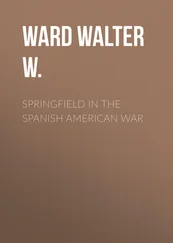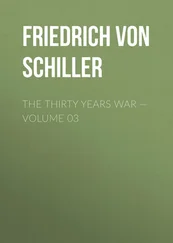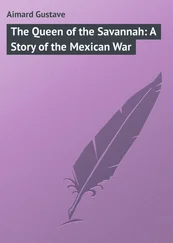The General had other troubles also. There was a plan at Washington, promoted by reports of his inefficiency and by letters from certain ambitious officers left in the rear, to put in his place one of the new brigadier generals. Scott, however, protected his interests, and by having him assigned to duty with his brevet rank, threw a great obstacle before the schemers. They encountered other difficulties as well, and finally Polk sent him word confidentially that he need have no fear of displacement. This, however, did not prevent a serious clash between him and the administration over another matter. Perceiving that Mexico could not defend effectively the remote and disaffected provinces of the north against even our volunteer forces, realizing that the possession of territory would be an advantage in making a treaty, and wishing particularly to impress the Mexican Congress, which was to meet on December 6, Polk felt extremely anxious to extend our occupation as much as possible at once, and with all this in view it was proposed to Taylor on September 22 that, should he see fit, he should have General Patterson,3 who was now the commanding officer at Camargo, occupy the chief points in Tamaulipas.6
As Taylor had bitterly complained of receiving hordes of volunteers for whom there was nothing to do, it was naturally presumed at Washington that such an expedition could be organized without interference with his plans; and, supposing also that Patterson was at Matamoros, far from Monterey, Marcy instructed that general to begin his preparations while awaiting definitive orders from Taylor on the subject. Such a movement, however, not being permissible under the terms of the armistice, a plan in which the government felt deeply interested came to nothing; and Taylor, perhaps to divert attention from this aspect of the case, not only vetoed the expedition, but protested violently against the course of the government in addressing one of his officers.4 Polk was naturally and properly incensed, but he believed Taylor was now in the field for the Whig Presidential nomination, and wanted to force a quarrel upon the administration; and hence Marcy replied mildly to the General that the right of the commander-in-chief to offer mere “suggestions” could hardly be denied.6
On another point also there was a clash. Polk and his Cabinet condemned at once and unanimously the Monterey armistice; but, shrewdly or charitably suspecting that undisclosed reasons for it might have existed, they decided to end it in such a manner as to express neither approval nor censure. Marcy therefore directed on October 13 that it should be terminated, explaining that it stood in the way of prosecuting the war vigorously and forcing Mexico to seek peace. As by its terms the agreement was subject to the approval of the respective governments, no difficulty stood in the way of cancelling it; and on November 5 Taylor notified Santa Anna, that since the Washington authorities disapproved of the armistice, he should consider himself at liberty to resume offensive operations on the fifteenth, since by that date he reckoned that his despatch would reach San Luis Potosí.6
In reply the wily Mexican attempted to convey an insinuation of bad faith on the part of the American government. This Taylor properly noticed in his rejoinder, expressing at the same time a hope that Mexico would accept the offer of the United States to negotiate, and that permanent friendly relations between the two republics might ensue. Santa Anna had now a better opening; and he protested that his country would do all she could to justify her title to sovereignty and independence, and would never listen to any proposal of peace, until the American army should evacuate her soil, and the American vessels lay aside their hostile attitude.5 The correspondence was published of course in the Diario, and obviously tended to unite the nation, as well as to enhance the prestige of its leader.6
The termination of the armistice enabled Taylor to occupy Saltillo, upon which his eye had long been fixed. For several reasons he deemed the town, a place of some 18,000 souls, important. It was the capital of the state of Coahuila, a support for Monterey and the chief pass through the Sierra Madre, a station on the high road to the south, and the dominating point in a region full of corn, wheat, cattle and other supplies. At this time the city was entirely without protection. Mejía had been ordered in May to fortify it, but had not been able to do so; and Santa Anna’s first thought, on learning that Monterey had capitulated, was to bring Ampudia back to San Luis Potosí with his demoralized soldiers.10
Accordingly General Worth received orders on November 8 to march for that place four days later with Lieutenant Colonel Duncan’s battery, the Artillery Battalion (eight companies), the Fifth and the Eighth Infantry, and Blanchard’s Company—in all about 1000 men;7 and Taylor with two squadrons of the Second Dragoons under Lieutenant Colonel May determined to accompany him. The morning of the twelfth brought a despatch from Marcy dated October 22, expressing the wish of the government that, in view of Santa Anna’s threatening posture and the increasing unfriendliness of the people, no attempt should be made to hold territory beyond Monterey, or at most beyond the mountains; but the decision was confided to the General, and he set out the next day.10
Advancing, then, by the left bank of the swift Santa Catarina River, at this time of the year but an insignificant stream, the column ascended gradually, passed the village of that name, and after marching nearly 28 miles came to a small bridge and a group of handsome live-oaks. Next the road descended a little, and, enclosed much of the way by lines of trees and maguey,8 pursued the same general direction until it reached the hacienda of Rinconada, a mile or so farther on. Up to this point the majestic ranges of the Sierra Madre, nearly destitute of vegetation, though here and there brightened by a white thread of water, had stood about six miles apart; but now they closed in, and the road, turning sharply to the left, plunged into a grand and sombre gorge known as the Pass of Rinconada. For three miles or more it ascended steeply between gray and frowning walls of stone decorated only with a few hardy and prickly growths, and sometimes partly hidden by the clouds; but finally the summit was gained, and before long the farm of Los Muertos (The Dead) came in sight with its bare, vertical cliffs and its huge cairn of cobble-stones—probably a memorial to some party of travellers murdered by robbers—which gave a grim significance to the name.10
Here the Americans gazed with special interest at Mexican works intended to check their advance. Not willing to give up this natural fastness Ampudia, in spite of the orders to withdraw, had undertaken to fortify it; but soon, discovering that more extensive defences than he possessed the means to erect and equip would be needful, to prevent the position from being turned, he had prudently concluded to dismantle his fortifications and retreat. The gorge now expanded, and gave place to a long, wide, open valley extending to Saltillo. Here gardens, fields and crops were seen once more, but how different! Instead of the orange and lemon groves, the bananas and figs of Monterey, with the languid smokes of sugar-houses rising in the distance, the soldiers beheld fields of wheat and oats, and orchards of cherries and apples. In short, a march of 65 or 70 miles had transported them to New England.10
Gathered with great difficulty on November 15, the legislature of Coahuila had elected and inaugurated J. M. de Aguirre as governor, and on approaching Saltillo the following day Taylor received from him a formal protest against the American advance.9 The General kept on, however, without replying, and leaving Worth’s command in the city square, pitched his tent on the farther side of the town. There was little to make the place agreeable. Saltillo lay on the southeastern side of a slightly concave plain, with mountains close behind it that looked, in the afternoon of a sunny day, like immense drifts of dusty snow. The city itself, consisting mostly of low adobe houses—protected with grated windows—clinging to steep, narrow streets, wore the aspect of dilapidation and age that was characteristic of provincial Mexico; and the common people, apparently less intelligent then the populace of Monterey, probably more dominated by the priests, and certainly more secluded from contact with Americans, looked sullen and hostile.10
Читать дальше












